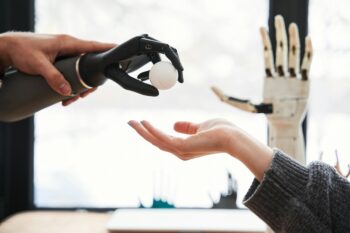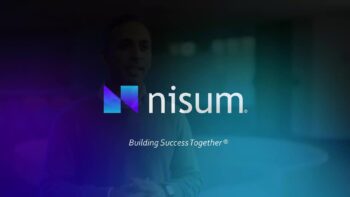Below is a guest post by Patrick Jobin. Patrick is a technical writer for Storagepipe Solution. Storagepipe has been helping organizations deal with rapid data growth by providing reliable and secure server backup solutions since 2001
Truly revolutionary technologies rarely come along, but one is emerging right now.
Although the tech industry seems to be constantly changing, most new innovations are simply the next stage of improvement over something that already existed… combined with some new marketing buzzwords for everyone to get excited about. For example, social media is nothing more than an extension of what the Internet has been providing since the mid-1990s. Tablet and mobile computing are nothing more than natural extensions of what desktop and laptop computing have been providing since the 1980s. And depending on how you define it, “cloud computing” has technically been around since the 1960s and 1970s.
To be perfectly honest, there have only been a few truly revolutionary paradigm shifts in the history of computing technology. Everything else has simply been a refinement of the craft.
Mainframes
The first major revolution came in the 1960s and 1970s, with the adoption of mainframe computing. This new technology allowed organizations to offer much better service, at a lower price, on a much more massive scale… by automating processes which would’ve been expensive or impossible to perform by hand.
Mainframes completely revolutionized business and information management as we know it.
Of course, the problem with mainframes is that it placed the “brains” of the organization in the hands of individuals who were technically knowledgeable… but lacked overall knowledge of what happens inside of the business and on the front-lines. But a new revolution would soon change all of that.
Desktops
When the first desktop systems came onto the market in the 1980s, the computing power which had once been the exclusive domain of mainframe operators was now placed in the hands of front-line workers and executives.
Now, business users could directly leverage the power of computers to automate their work and extend their capabilities as was never imagined possible before. This revolution led to work processing, spreadsheets, desktop publishing, digital video editing, and many other functions which went far beyond the simple reporting and database manipulation that took place in the mainframe server rooms.
Also, as business users became dependant on the power of these “personal computing machines”, they began do demand portability and freedom to work from anywhere. This spawned the growth of laptops, tablet, and eventually mobile computing.Although smart phones have a form that’s completely unrecognizable from desktop computers, they perform many of the same functions in a more portable and convenient way.
Internet
Although networking and remote computing services have been around since the mainframe age, something very special happened in the 1990s.
Linux was invented in 1991, in an effort to make the power of Unix available freely to smaller start-ups, programmers, students and the general population. Roughly about the same time, Tim Berners-Lee created the early foundation for the World Wide Web.
This made worldwide networking more accessible to the general population, and forced telecommunications companies to upgrade their infrastructure to keep up with demand from companies and individuals for this new communication channel.
We’ve come a long way since then. And today, most business is conducted over the Internet… and at a massive scale.
Even “new” technologies like “Social Media” are simply extensions of what the Internet was originally intended to do. (It’s also important to note that certain technologies, such as email and remotely-hosted applications have actually been around since the mainframe era)
Big Data
You may not realize it yet, but a massive paradigm shift has been occurring over the past few years… and it will completely change the way you use technology forever. This new innovation will be just as life-changing as mainframes, personal computers and Internet technology. But the change is taking place so subtly that you won’t even realize it’s happened until it has already become an essential part of your everyday life.
Lower storage costs have enabled organizations to produce, collect and retain data on a scale that has never been seen before. In fact, this exponential data growth has reached a point where traditional relational database models are no longer sufficient for working with this information.
A perfect example would be Google, which receives billions of search queries every day… and must search through petabytes of indexed content within milliseconds to return the most relevant results. Data analysis on this scale would simply not be possible with structured relational databases. Instead, a completely new way of working with data was required. Part of the problem had to do with the fact that relational databases were primarily designed for high-volume, high-accuracy transactional data processing… similar to what a bank would require. But these data models were poorly designed for analyzing and extracting information from massive data pools.
New “non-relational” database technologies like Hadoop, Cassandra, NoSQL, and MapReduce have unlocked the potential of this stored information by making it easy, cheap and practical to extract value from stored database data and even unstructured data.
For 2 great examples of Big Data in action, I’d recommend taking a look at Google Flu Trends, and the Aikinator.This new class of technology will have a profound impact on our daily lives within a very short time. Business, finance, government, commerce, medicine and a number of other fields will reap enormous benefits from the powerful capabilities of Big Data.
For years, scientific research has been limited by technology’s ability to store, analyze and simulate massively complex models. Big Data will permit scientists and researchers to make breakthroughs in the areas of weather prediction, genetic medicine, particle physics, and astronomy. And governments will leverage the statistical analysis capabilities of Big Data to promote greater transparency, and to establish more successful economic policies.
Big Data is a big deal. And its effects on society will be on par with those generated through Mainframes, Personal Computers, and the Internet.
Big changes rarely come along. So it’s really exciting to see ourselves at the beginning of this incredible new era in the history of computing.






